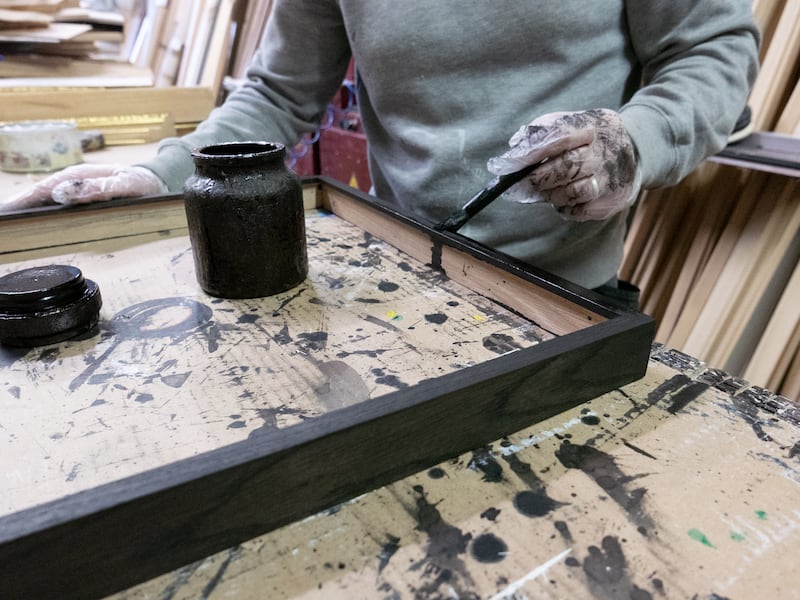At Artisan Frames, David Kirwan and the team have looked after art for everyone from the National Gallery of Ireland to the OPW and from Stoney Road Press to the Green on Red gallery. So where do you start?
What’s all the fuss? Isn’t it just a couple of bits of wood and some glass?
Frames can change a work of art, for better or worse. Worse still, the wrong framing can cause enormous damage. Kirwan starts by looking at the medium and asking where the work is going to go. “We treat photographic prints differently to fine-art prints. Oil on canvas again has very different requirements to works on paper.” Corporate clients, he adds, tend to want different frames from those that might work best in a home.

So I can’t just pick up one of those generic lads for €10?
Many do, but if you have something precious to frame it’s worth giving a little more care to what’s surrounding it. Even if using something ready-made, Kirwan cautions against using masking tape or sticky tape – “It’s not acid-free and eventually dries up and falls off.”
Acid-free?
It’s all about keeping your art safe for the future, which the professionals call archival framing. “That’s the standard everyone should demand. Incorrect framing can wreck the art, either by sticking to the glass or by acids leaking into the work from tapes and boards.” Paper or tape that is not acid-free causes yellowing over time.
READ MORE
And that’s it?
Not quite. Next up is glass. “We still have regular glass but mostly use AR70, which is anti-reflective with 70-per-cent UV blocking,” says Kirwan. “Then there is full museum glass, or AR99, which is anti-reflective with 99-per-cent UV blocking.” This means that, although it’s still not advisable to hang a work in the full glare of sunlight, it’s going to be a lot safer from fading.

Seems there are an awful lot of technical terms
There are – it’s a skilled business. Get into it and you’ll soon know all about mitre joints, splines, float mounts and box frames. As you get fancier, museum perspex, gilding, spraying, lacquering and painting come into play. “Mounting,” Kirwan says, “is an area all on its own.” Artisan’s own mounter cost €20,000.
Not something I can do at home, then
Actually, it is. You’ll need basic equipment, such as a mitre square, saw and trimmer, frame clamp, glass cutter, hand saw, mount cutter… There are plenty of online tutorials, but you’re much better off with a hands-on course to see if it’s for you before splashing out on the gear. Cregal Art, in Galway, runs a week-long one-to-one course for people thinking of setting up in the profession; Joe Creavin will talk you through whether it’s for you in advance of booking.
Any other skills I need?
“It’s important to have a real interest in woodwork,” Kirwan says. You also need to be careful and have attention to detail. “A family photograph may not be high in value, but it cannot be replaced.” You also need tact. “Some artists are very involved and bring some unique challenges,” says Kirwan, tactfully himself. “Other artists feel too close to the work and are happy for someone else to make decisions. No one earns a king’s ransom in framing, but it’s a lovely job. The nicest thing,” he concludes, “is seeing the art up close and personal. I also love meeting artists in their studios. It really feels like a collaborative relationship.”















